Considering the total population of Java today, one might be startled to realize just how many people live on this Indonesian island. Java’s land area is slightly smaller than Florida, and just a little bit bigger than the whole of Greece. However, while the Sunshine State is populated by more than 20 million people, and around 11 million call Greece home, roughly 150 million souls dwell on Java. It’s not hard to understand the reason behind this overpopulation; one only needs to look into the history and geography of the island.
Located near the equator with the Java Sea to its north and the Indian Ocean to the island’s south, rainfall is consistently high over most parts of Java, particularly during rainy season. Moreover, being among the islands located on the Pacific Ring of Fire, Java’s volcanoes are plentiful and alive, ensuring the soil is repeatedly replenished with minerals essential for keeping the tapestry of forests, plantations, and farmlands on the island lush and prolific. Such abundance is critical for supporting a multitude of societies to thrive, which helps nurture a conducive environment where people’s basic needs are fulfilled and artistic endeavors encouraged. In the past, these conditions had allowed artisans and masons to create monumental structures unlike anything the island had ever seen before.
However, more than a thousand years since the great temples of the Medang kingdom were completed and eventually abandoned – or centuries in the case of those ornately carved temples in East Java – whenever the question “where is the cultural center of Java?” is asked today, the answers likely evoke a bitter schism that tore the royal court of Java apart, an event instigated by the avarice of the Dutch East India Company (VOC). While Java itself was not the main reason why the Dutch ventured far from Europe risking their money and lives – it was the Spice Islands (where nutmeg originated) that had lured the Spanish and the Portuguese decades before the arrival of the Dutch – the island was already home to some of the most important trading ports in the vast archipelago that makes up modern-day Indonesia. The port of Batavia in the western part of Java, where the colonial administration in the Dutch East Indies was based for most of the time, eventually grew into the teeming megalopolis we now know as Jakarta.
So, back to the question: where is the cultural center of Java?
Two cities usually pop up in people’s minds: Solo (Surakarta) and Jogja (Yogyakarta). Not only are both located near the ruins of the colossal Hindu-Buddhist ancient temples this part of Java is famous for, but they also host what are arguably the most influential royal courts on the island. The Sunanate of Surakarta and the Sultanate of Yogyakarta are often seen as the custodians of Javanese culture, bulwarks against rampant modernism and also creeping conservatism that has worryingly been gaining ground in recent years. Both monarchies trace back their history to the same root: the Mataram Sultanate, a powerful Islamic kingdom that rose to prominence in the late 16th century and reached its apogee in the 17th century.
Although nominally a sultanate – an Islamic realm led by a sultan – Mataram was established in a period of time when Java – for centuries a stronghold of Hinduism and Buddhism – was gradually converting to Islam. Some Hindu traditions remained, not only in architecture (although depictions of humans were conspicuously absent), but also in rituals. Mataram Sultanate, along with other smaller sultanates on the island, spread a version of Islam that was starkly different from the one practiced in the Arabian desert.
In the early 18th century, when the VOC grew more powerful, the sultan sought help from the Dutch company to put down rebellions in his kingdom. This marked an era when the Dutch began meddling with the internal affairs of the Mataram Sultanate, supporting whichever ruler who brought the most benefits to the European power. One by one, coastal cities once held by Mataram were ceded to the VOC, leaving only the heartland of Central Java in the sultan’s full control. In the mid-18th century, the Dutch further involved themselves in the power struggles of the royal court of Mataram. Pakubuwono II, the sultan at that time who had just built a new palace in Surakarta and moved his court there, was a close ally of the Dutch. Prince Mangkubumi – Pakubuwono II’s brother who had been promised a reward of land for successfully suppressing a rebellion – grew dissatisfied with the sultan for changing his mind and giving concessions to the Dutch instead.
In 1755, following years of rebellion by Prince Mangkubumi, a treaty was signed by the VOC, Pakubuwono III (Pakubuwono II’s son), and the rebel prince – omitting Prince Sambernyawa, another claimant of Mataram Sultanate’s core realm. The treaty divided Mataram in two: Surakarta and the land east of the Opak river belonged to Pakubuwono III, and Yogyakarta to the west of the river fell under the control of Mangkubumi who then took the title Hamengkubuwono I. Apart from the split of Mataram, the treaty also allowed the VOC to determine the ruler of the two new kingdoms whenever necessary – officially bringing Mataram’s independence to an end.
After gaining independence from the Dutch in 1945, the Indonesian government gradually stripped local kings across the archipelago of political power, demoting them to mere cultural leaders of their respective communities. The Sunanate of Surakarta was no exception; the kingdom became part of the province of Central Java although the sunan (how the sultan is called in Surakarta) retained his title and continued residing in the royal palace. Neighboring Yogyakarta, however, was granted a special status, allowing its sultan to keep his political power in the nascent republic. This was made possible thanks to Hamengkubuwono IX’s pivotal role in providing a temporary capital for Indonesia when Jakarta fell to the Dutch following the European nation’s military intervention (known in Indonesia as the First Dutch Military Aggression) to retake parts of its former colony.
Today, the royal palace (keraton) of Surakarta is a testament to the kingdom’s significance in the past and a silent witness to the intrigues that took place within its walls. Situated right at the heart of the city of Solo, the whitewashed Gladag gate welcomes people to the northern square of the expansive palace compound. Fronting the square is the 18th-century palace mosque, commissioned by Pakubuwono III, and a large audience hall used by the house’s lords. A short walk deeper into the complex brings visitors to a trapezoid-roofed gate, the entrance to the main palace. A shaded veranda painted and decorated with accents of blue and adorned with kala and makara, ubiquitous in Hindu temples, lies immediately behind the gate with a round tower looming from the back of the structure. Beyond this display of different architecture styles is a leafy courtyard surrounded by the palace’s main audience hall as well as rooms and chambers which now house some of the palace’s collections, including royal chariots and centuries-old Hindu-Buddhist artifacts.
The current sunan, Pakubuwono XIII, resides in the tranquil palace complex following another power struggle in recent years as the previous sunan, Pakubowono XII, never announced any of his sons as the heir to the throne. In April 2017 a dispute between two claimants was finally settled when the younger prince acknowledged his half-brother as the new sunan. Surakarta’s long rival Yogyakarta, meanwhile, has been more successful in avoiding this kind of internal commotion, though perhaps not for much longer as greater uncertainties are looming on the horizon.



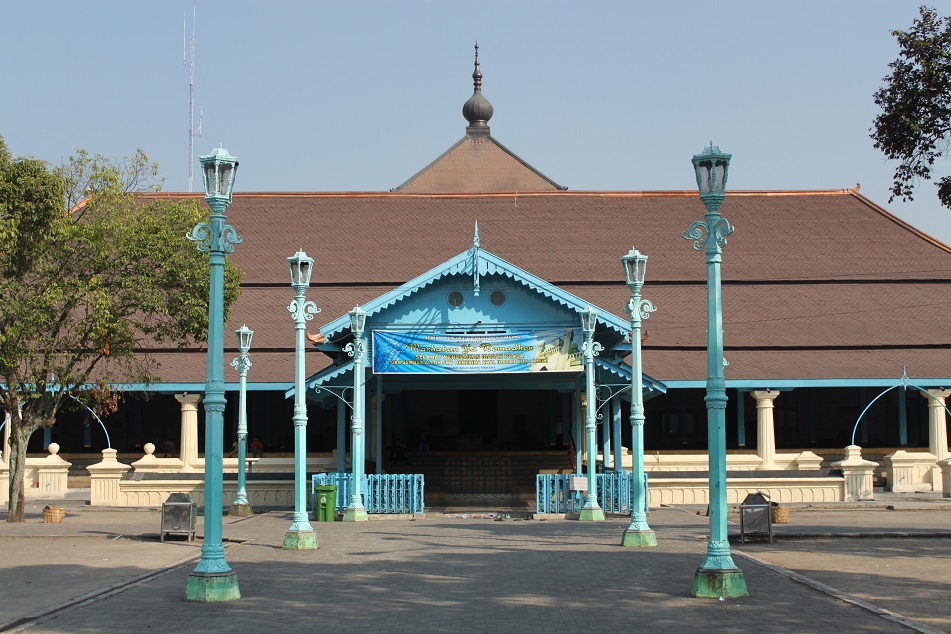

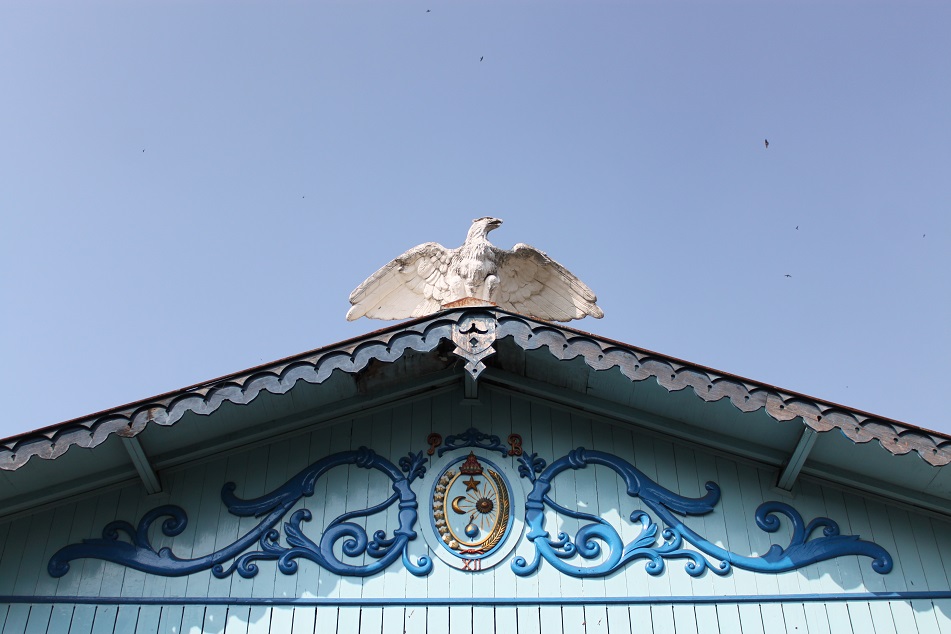
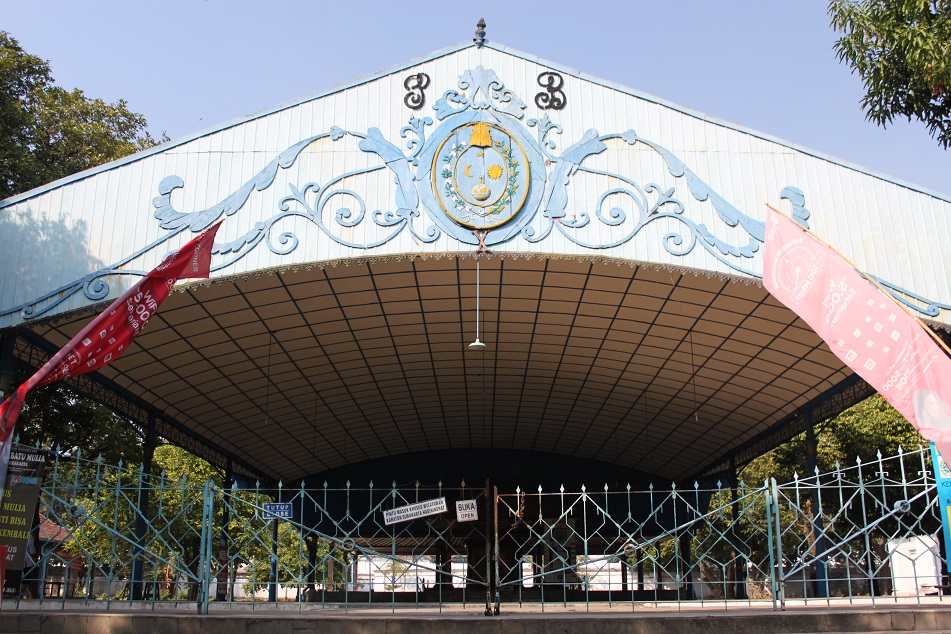

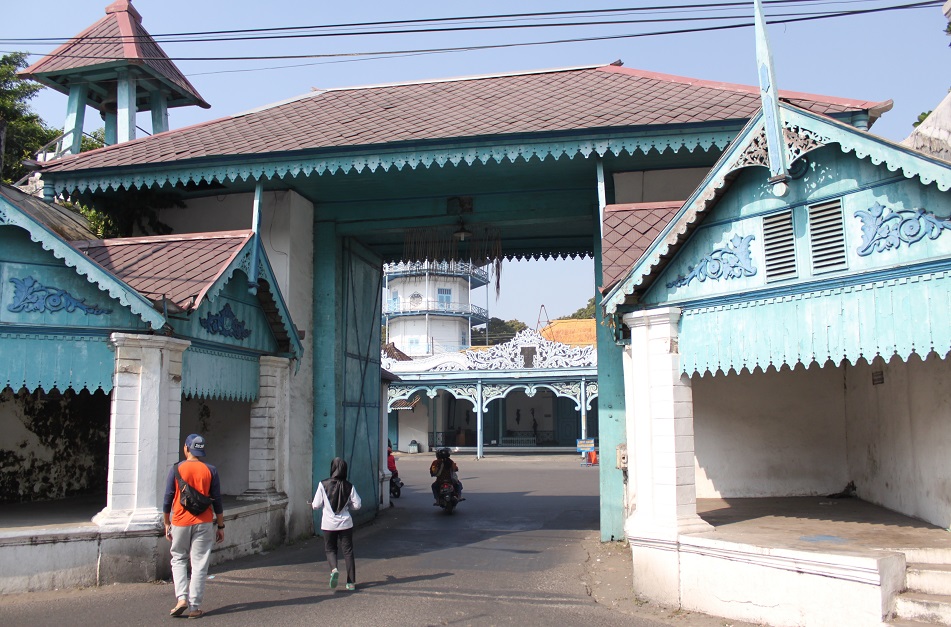
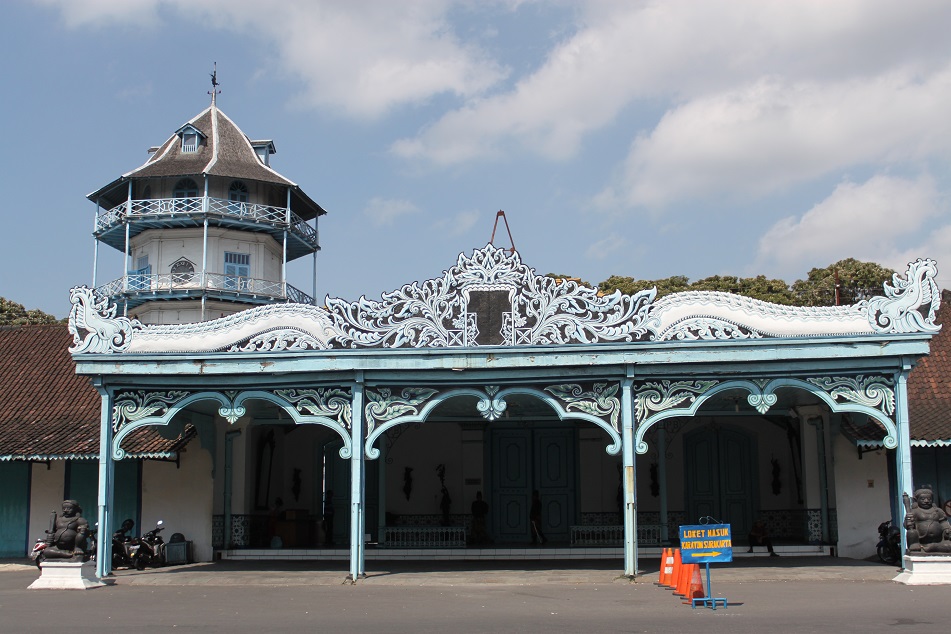









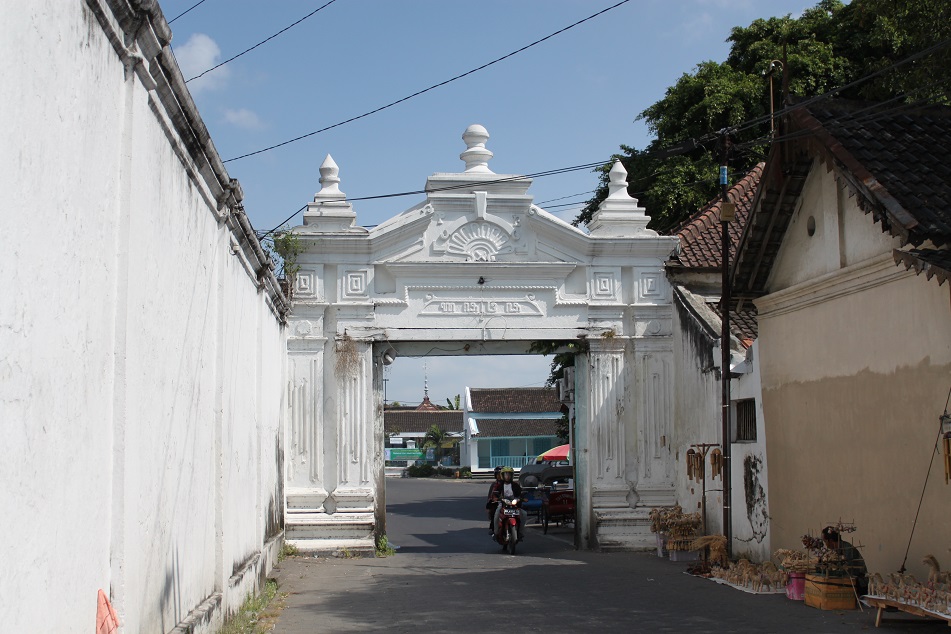
Lovely array of images telling the story and beauty of Java!
LikeLike
Thanks Peter! Java is a part of Indonesia I call home, and it’s always nice to write something about the history and culture of this land.
LikeLiked by 1 person
A good advice is write about the things one knows best. And that is the case with you, Bama.
LikeLike
You’re too kind, Peter. But thanks!
LikeLiked by 1 person
You have captured the historical footprints of Java with an exquisite bouquet of images in the well-researched article. I have a feeling that the later day overreach over Java’s Hindu-Buddhist past was a dampener.
LikeLike
Much appreciated, Umashankar! Java’s Hindu-Buddhist past, animist roots, and syncretic Islamic traditions are inextricably woven into a tapestry of colorful identity many Javanese still adhere. This palace (and the ones in my future posts) are some of the results of this amalgamation of the seemingly contradictory cultures, making Java among the most fascinating islands in Indonesia. I might be biased, though, but you should come and see for yourself to understand what I mean.
LikeLiked by 1 person
I honestly had no idea there were still vestiges of former monarchies across Indonesia. Am I correct in understanding that tourists are allowed into the very same palace Pakubuwono XIII is living in currently? If so, that makes the experience so much cooler!
I also love that I feel what the weather’s like just by looking at the architecture. The floors made of tiles or concrete, the awnings, and the strategic placement of walls and pillars makes me feel like I’m being shaded from the Indonesian heat.
LikeLike
According to an article published by the BBC Indonesia last year, apparently there are still more than 40 active monarchies across the country. Only one, though, is still run like a real kingdom in the past, with hereditary sultans holding true political power. More on that in my next post. As for Pakubuwono’s palace, tourists are allowed to wander around most sections of the palace, except those where members of the royal family live.
You know how oppressive the heat can be in this part of the world, hence the use of those tiles which feel cooler than the temperature outside. This and other palaces around Solo and Jogja are good examples of how tropical architecture accommodates the needs and lifestyle of a king.
LikeLiked by 2 people
What beautiful architecture!
LikeLike
Wait until you see the other two Javanese palaces, Nicole! More on them coming up.
LikeLiked by 1 person
Can’t wait Bama! 🙂
LikeLiked by 1 person
So it was not only the British who used the divide and rule strategy.
Why not do a post of mosques in Indonesia? Much of the world thinks mosques are buildings with domes and minarets. The one in Keraton proves otherwise.
LikeLike
Great powers seem to know how to divide and rule people and nations for their own benefits. This has been the case, and will always be if people are not willing to learn from history. Speaking of mosques in Indonesia, actually two or three years ago I had that idea, but slowly I completely forgot about it … until you mentioned it again! I did publish some photos of mosques without domes and minarets in the past though:
https://harindabama.com/2016/08/07/rise-of-islam-in-java/dm08/
https://harindabama.com/2016/08/27/minangkabau-the-land-of-buffalo-horns/mk18/
and this https://harindabama.files.wordpress.com/2015/09/sumatra08.jpg
But I think one day I’ll try write a post specifically about this kind of mosque. Thanks for rekindling that idea!
LikeLiked by 1 person
That last one’s wild. These are definitely great examples to dispel the stereotype. As well, many people are not aware that the largest Muslim populations in the world are in India and Indonesia, not Arabia!
LikeLike
Unfortunately, now more and more mosques in Indonesia are built with domes, whether they’re cheaper to build or nowadays people in general draw inspirations solely from the Middle East, which is such a shame considering how rich and varied Indonesian vernacular architecture is. However, seeing that massive modern mosque under construction in West Sumatra was very encouraging.
LikeLiked by 1 person
That dwarapala also has an impressive mustache!
LikeLike
Good observation! Thanks for pointing that out — next time I see a dwarapala I’ll take a closer look whether or not he has a mustache.
LikeLiked by 1 person
Thank you for writing this beautiful post about my hometown. I personally really appreciate it 🙂
LikeLike
The pleasure is mine, Sonny. I would love to return to Solo one day to explore (and eat) more!
LikeLike
I am always amazed of how overpopulated we are! It is rather startling isn’t it? I am also unsure of the future of the Sultanate of Yogyakarta. It used to be that people greatly respect the sultanate and now it seems that it does not apply anymore.
LikeLike
Yet there are still some places on this island where we can find solitude — Baluran is one of them. Actually I’m curious about the general sentiment of the people in Jogja toward their sultan, especially in recent years following internal conflicts within the royal court and the increasing intolerance in the province.
LikeLike
I had to laugh when you said abundant rain and active volcanoes were a reason FOR the large population – those two things might scare me off! (But by now you know how I feel about rain …) Anyway, very interesting history and I love all the blue and blue-green paint!
LikeLike
Ahh yes, especially after that recent trip to Ecuador. When you come to Indonesia one day, make sure it’s not in the rainy season!
LikeLiked by 1 person
I have never been to Solo, from the images and its history, it must be an interesting city to visit! I would love to visit Solo in the future 🙂
LikeLike
A trip to Solo would worth doing when you come back to Indonesia one day. Don’t miss all those delectable dishes the city is famous for!
LikeLike
Such a charming place, Bama. Your pictures show an astonishing place which I definitely have to add to my bucket list!
LikeLike
It really was, Agness. I wish I had more time in the city to explore more.
LikeLike
This is such a beautiful location! I want to go back there.
LikeLike
Despite Surakarta’s rich cultural scene, this part of Java is still relatively unknown to foreigners, unlike its neighboring Yogyakarta. Hope you’ll make it there one day! Thanks for reading, Jean-Michel!
LikeLike
Pingback: Javanese Royal Palaces: Yogyakarta | What an Amazing World!
Hello Bama, thank you for sharing your pictures and history about Java. I can see the Dutch influence in many of the Javanese architectures, it’s interesting to see the influences of the different cultures reflected in man-made structures.
LikeLike
Thanks for reading, Liz. Architecture is indeed a showcase of different cultural influences that have shaped a place’s identity. The more I travel, the more I see past connections among places not only in one region but also those thousands of kilometers apart.
LikeLiked by 1 person
Pingback: Javanese Royal Palaces: Mangkunegaran | What an Amazing World!
One of the things I really enjoyed about the keraton in Solo was the fact that ordinary visitors like us could walk around and explore quite a number of rooms and courtyards. It was fascinating to see European statues, Hindu-Buddhist relics, and also antique royal chariots on display. Bama, do you know if pastel blue is the color of Solo’s royalty? That seems to be the preferred shade for doors, columns, ceilings, and balustrades in the palace.
LikeLike
To me it seems like Javanese kings have always been very accommodating to cultural influences from lands faraway from Java; Hindu-Buddhist elements from India, Islamic characters from South Asia and the Middle East, and European flair are all palpable at the keraton in Jogja, Solo and even Cirebon. As for the color, I believe blue is one of the official colors of the Sunanate of Surakarta as it is prominently depicted on its official emblem, symbolizing the skies.
LikeLiked by 1 person
I find this Surakarta keraton more beautiful than the Mangkunegaran (although there really is no need to compare.. LoL).
Something I don’t quite understand, if the sunanate is not in power anymore, what makes it still exist and maintain such a beautiful palace? Not to mention all the juicy rumors about certain members of the royal family’s behaviors..
LikeLike
That means if we were to build our houses next to another, they wouldn’t look similar! 😀
I like the airiness of Pura Mangkunegaran’s Pendopo Ageng, but I loved the fact that Keraton Surakarta was more accessible. Even though most royal families in Indonesia hold no real power today, but I think to some degree they are still treated like royalty by the locals, hence the upkeep of their expansive residence.
LikeLike
Yang aku tahu, sebenarnya pada masa awal Republik Indonesia berdiri paska kemerdekaan, Surakarta mendapatkan status daerah istimewa bersama dengan Yogyakarta, Aceh, dan Bulungan (di Kalimantan Utara). Namun dalam perjalanannya, Sunan Pakubowo XII dianggap tidak sanggup mempertahankan daerahnya ketika gerakan anti-swapraja muncul, bahkan sampai melahirkan tragedi penculikan dan pembunuhan para petinggi pemerintahan Daerah Istimewa Surakarta. Sehingga akhirnya pemerintah Indonesia mengambil alih dan memutuskan untuk melebur DIS dengan Propinsi Jawa Tengah.
Sepanjang yang aku ingat, kondisi Istana Kasunanan Surakarta ini tidak sebaik dan seberuntung Istana Kasultanan Yogyakarta, atau bahkan tetangga dekatnya di Mangkunegaran. Kondisinya agak kurang terawat dan kurang ‘kinclong’. Mungkin karena dalam tahun-tahun terakhir ini istana tersebut mengalami banyak goncangan, akibat konflik internal mengenai tahta Sunan XIII. Pas aku ke sana (tahun 2015an), seingatku konflik itu masih ada. Dan kalau memang di tahun 2017 konflik itu sudah terselesaikan, harapannya sih Istana ini bisa jauh lebih terawat lagi. Karena memang memiliki nilai historis dan seni yang tinggi.
LikeLike
Betulll… Makasih buat tambahan informasinya, Bart. Gak kebayang ya dulu pas masa-masa awal kemerdekaan, masih mencekam, tapi juga penuh harapan. Soal konflik internal memang seingetku baru di tahun-tahun belakangan ini baru bisa terselesaikan. Masih inget beberapa tahun yang lalu di TV ada berita salah satu kelompok yang mengklaim tahta Surakarta kemudian melakukan pemblokiran atau apa gitu terhadap salah satu bagian dari keraton. Kalau gak salah beritanya gitu. Ya semoga dengan kembali stabilnya kondisi internal Keraton Surakarta, istananya bisa kembali terawat.
LikeLiked by 1 person
Menyoal konflik internal itu, aku jadi ingat masalah yang sama di Cirebon. Di Keraton Kanoman kalau gak salah. Terjadi konflik yang serupa, termasuk pemblokiran akses istana juga.
Aku gak tau, apakah konflik macam ini dapat diintervensi pemerintah atau nggak ya?
Hmmm, iya Bam, sama harapannya juga gitu. Semoga dengan berakhirnya konflik internal tersebut, kondisi istana itu bisa terawat lebih baik.
Btw, banyak yang bilang juga karena memang angka-angka penguasa yang baru ini sudah masuk ke dalam nubuatnya sebagai angka-angka ‘penutup’. Seperti X, IX, XIII dan sebagainya.
LikeLike
Oh iya bener, di Cirebon juga pernah ada konflik yang serupa. Soal intervensi pemerintah, kayaknya gak relevan sih menurutku soalnya keraton-keraton itu (kecuali Yogyakarta) kan berada di luar struktur kepemerintahan.
Wah yang nubuat aku malah baru denger. Tapi sepertinya dalam sejarah dunia memang jarang (atau malah gak ada) penguasa dengan gelar sampai lebih dari XX. Biasanya akan ada satu orang yang memakai gelar baru dan angkanya pun restart dari I lagi.
LikeLiked by 1 person
Iya juga sih ya. Btw, aku punya kisah ‘agak sedih’ dari Keraton Kanoman pas aku ke sana tahun lalu. Bukti nyata kalau konflik internal itu meninggalkan bekas.
Iya, seperti kepercayaan IX sebagai penutup di Kerajaan Siam (meskipun ini sudah dinubuatkan Raja Rama I ya).
LikeLike
Wah aku malah baru tau kalo Raja Rama I pernah bernubuat bahwa Rama IX merupakan raja penutup. Aku agak penasaran sih gimana rakyat Thailand memandang Rama X, mengingat segala kontroversi yang pernah meliputinya.
LikeLiked by 1 person
Nah soal itu jangan ditanya pas lagi di Thailand nya, gak bakal dijawab. Lesse majeste 🙂
LikeLike
Tul! Jangan main-main sama aturan lèse majesté di Thailand. 🙂
LikeLiked by 1 person
Pingback: Radya Pustaka: A Forlorn Museum | What an Amazing World!
Pingback: Killing Time in Semarang | What an Amazing World!
Pingback: A Short Escape to Ambarawa | What an Amazing World!